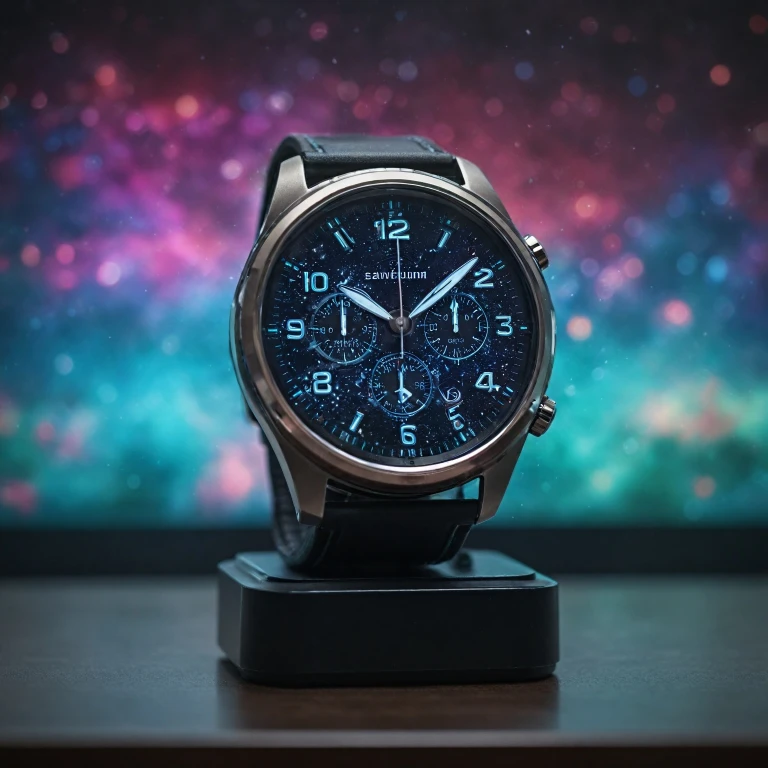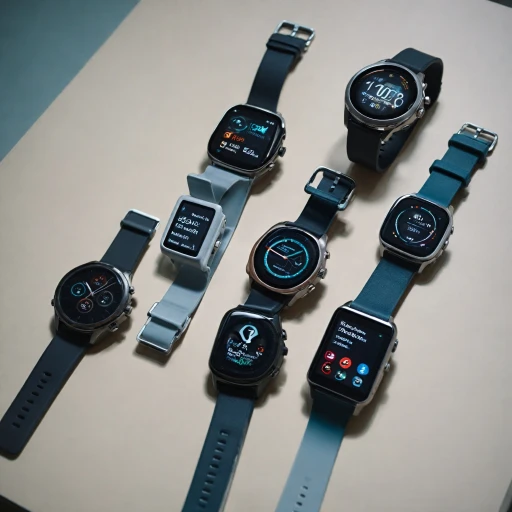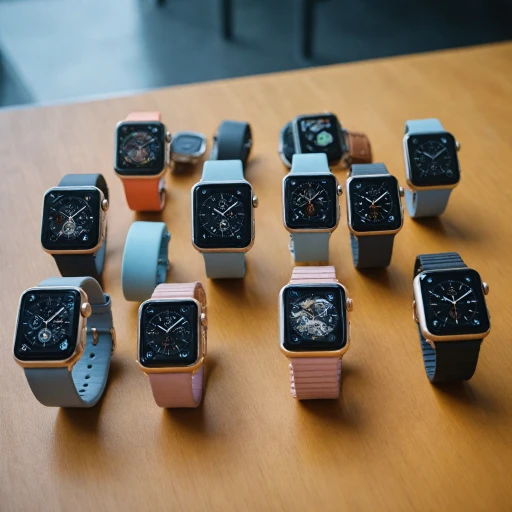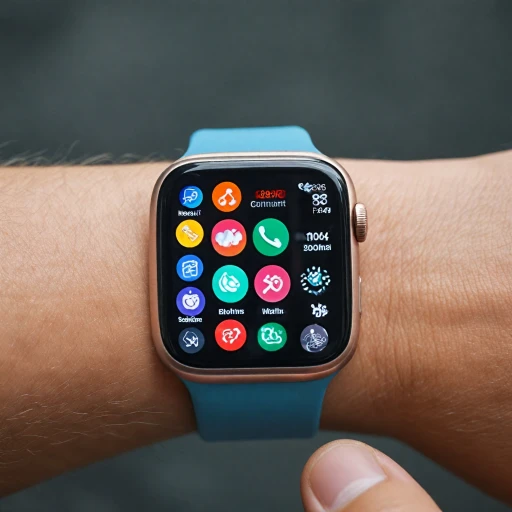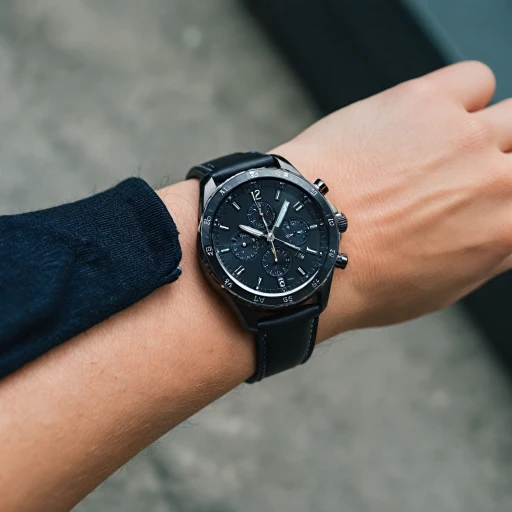
The Evolution of Apple Watch: A Brief Overview
A Journey Through the Generations
Since its debut in 2015, the Apple Watch has become a significant presence in the realm of smartwatches. With each iteration, Apple has introduced innovative features that have not only enhanced its usability but also set trends in the smartwatch industry. From the initial focus on notifications and fitness tracking, the Apple Watch has evolved into a comprehensive health and communication device.
The advancements can be observed with features like GPS and cellular integration, allowing users to stay connected without the need for an iPhone. The introduction of an aluminum case, watchOS improvements, and a variety of sport bands give users options for customization and use across different activities. Over the years, materials like stainless steel and titanium have further enhanced the durability and aesthetics of the watch.
In terms of health features, the Apple Watch has moved beyond basic functions to include capabilities such as heart rate monitoring, sleep tracking, and even fall detection. The Apple Watch has made significant strides, especially with the watch ultra, in promoting preventive healthcare by warning users of potential conditions like sleep apnea.
The display and battery life have also undergone transformations. Each new series brings a refined approach, with a penchant for bigger display and longer battery life that many users find appealing for daily use, both in casual and sport contexts.
Looking to the future, Apple continues to explore ways of integrating advanced technologies into its devices. As consumers prepare for potential new releases in September each year, expectations are high. Proprietary apps and industry-leading features like GPS cellular capability and diverse case options like silver aluminum and jet black are now standard, making the Apple Watch a quintessential tool for tech-savvy individuals. For those exploring the best smartwatches, including fitness-focused and lifestyle options, our detailed guide provides an in-depth exploration of choices available in the market today.
Anticipated Features of the Apple Watch Series 10
Projected Enhancements for the Series 10
Apple continues to devise innovative updates to the Apple Watch series, maintaining its position at the forefront of wearable technology. The forthcoming Apple Watch Series 10 is eagerly anticipated, with many speculating on the enhancements it could bring to the table. The combination of a robust aluminum case and lightweight titanium or stainless steel materials could offer both durability and elegance, aligning with Apple's aesthetic appeal. A sleek and vibrant display may complement these materials, enhancing the visual appeal even further. The company is expected to introduce a range of new bands, possibly with sport-oriented designs, including black sport and jet black options. Improvements in health features may take center stage, possibly incorporating advanced health monitoring capabilities, such as sleep apnea detection. Existing functionalities like GPS cellular, heart rate monitoring, and sleep tracking may see enhancements, potentially integrating more deeply with the iPhone through watchOS updates. The introduction of a new battery life format could be significant, offering extended usage and optimizing power management, thus addressing ongoing concerns with smartwatch battery durability. Additionally, functionality like fall detection might be refined to improve user safety and deliver more accurate readings. One could also expect enhancements in the Apple Watch Ultra model, which might offer features beyond sport and adventure, perhaps incorporating a new sport band for outdoor enthusiasts. For those excited about the latest in wearable tech enhancements, more discussion can be found in this analysis on lifestyle-compatible smartwatches.Release Patterns: What History Tells Us
Understanding Apple's Launch Patterns
Apple follows a fairly predictable release schedule for the Apple Watch, typically announcing its new models in September during its annual iPhone unveiling event. This pattern has become somewhat of a tradition, allowing consumers to anticipate the approximate time of year new features and models will be available. The usual suspects such as the GPS, cellular capabilities, various case materials from aluminum to titanium, and a variety of sport bands are reliably updated with each new series. Looking at past trends and considering factors like the first introduction of the Apple Watch Ultra, which expanded its lineup with more robust and sport-centric features, it's reasonable to expect future innovations that address both the existing portfolio's gaps and trending consumer demands. Another aspect is Apple’s approach toward incremental upgrades which makes each new watch series stand out. Innovations in health-related features like fall detection and possibly future enhancements to sleep tracking that could even detect sleep apnea are areas where expectations are high. Apple capitalizes on previous trends, ensuring the latest watch series advances the technologies consumers have come to rely on. The durability factor is augmented by options like stainless steel or silver aluminum cases, each bringing unique aesthetics and durability. Additionally, the improvements in watchOS, battery life, display, and app integrations continue to elevate user experience. While product cycles bring updated technology to the table, some challenges persist. Elements like battery life and connectivity whether GPS or cellular are continuously pushed further, leading consumers to anticipate even greater developments in these areas with future releases. If you're exploring multiple smartwatch options including Apple competitors, visiting exploring the world of Android smartwatches can provide some valuable insights into a broader range of possibilities.The Impact of Smartwatches on Health and Fitness
The Role of Smartwatches in Modern Health and Fitness
Smartwatches have revolutionized the way we approach health and fitness, offering a suite of features that cater to a wide range of needs. The Apple Watch, with its various series including the anticipated Series 10, has been at the forefront of this transformation. From tracking heart rate to monitoring sleep patterns, these devices have become indispensable tools for health-conscious individuals.
Advanced Health Monitoring
One of the standout features of the Apple Watch is its ability to monitor heart rate with precision. This is crucial for detecting irregularities that could indicate underlying health issues. The watch's GPS and cellular capabilities also allow users to track their workouts accurately, whether they're running, cycling, or engaging in other sports. The integration of features like fall detection and sleep apnea monitoring further enhances its utility in safeguarding user health.
Fitness Tracking and Beyond
Fitness enthusiasts benefit from the Apple Watch's sport band and aluminum case, which make it both durable and comfortable for daily wear. The watch's display provides real-time feedback during workouts, helping users stay motivated and on track. Additionally, the watchOS platform supports a variety of apps that cater to different fitness goals, from weight loss to muscle building.
Encouraging a Healthier Lifestyle
Beyond individual health metrics, the Apple Watch encourages a holistic approach to well-being. Its features promote regular activity, mindfulness, and even hydration reminders. The watch's ultra and titanium models offer enhanced durability for those who lead an active lifestyle, while the GPS cellular option ensures connectivity even when away from the iPhone.
Challenges and Innovations
While the Apple Watch has made significant strides in health and fitness, challenges remain. Battery life is a common concern, especially with the addition of new features. However, advancements in technology continue to address these issues, promising even more efficient and reliable devices in the future.
In conclusion, the Apple Watch Series, with its diverse range of features and models like the silver aluminum and gold stainless options, continues to play a pivotal role in promoting health and fitness. As we look forward to the Series 10, it's clear that the impact of smartwatches on our daily lives will only grow stronger.
Challenges in Smartwatch Technology
Overcoming Technological Hurdles in Smartwatch Development
The journey of smartwatch evolution, including the Apple Watch, has faced numerous challenges. Addressing these issues is crucial for future iterations such as the anticipated Series 10. Firstly, optimizing battery life continues to be a major focus. As smartwatches integrate more health features, like monitoring heart rate or detecting sleep apnea, energy consumption naturally increases. Maintaining a balance between functionality and longevity is essential, particularly for models like the GPS cellular and Watch Ultra versions that demand more power. Display advancements also present a hurdle. Offering high-resolution screens with vibrant colors, like in the jet black or silver aluminum finishes, needs careful consideration to avoid draining batteries. The challenge is to incorporate superior displays without compromising the watch’s slim design or battery endurance. Material selection, as seen in aluminum or titanium cases, influences both the durability and appeal of devices. Issues like the trade-off between durability and weight are paramount for those seeking a lightweight sport band or a more robust design for activities like hiking. Incorporating advanced features such as fall detection or GPS remains complex due to hardware limitations. These advancements heavily rely on software optimization, as seen in watchOS improvements, to ensure seamless user experience without unnecessary battery drainage. Finally, pricing strategies continue to challenge manufacturers. With the market expanding, ensuring affordability while providing high-quality features can dictate the success of new releases.For consumers, understanding these challenges highlights the evolution of their beloved gadgets and sets realistic expectations for future advancements.
